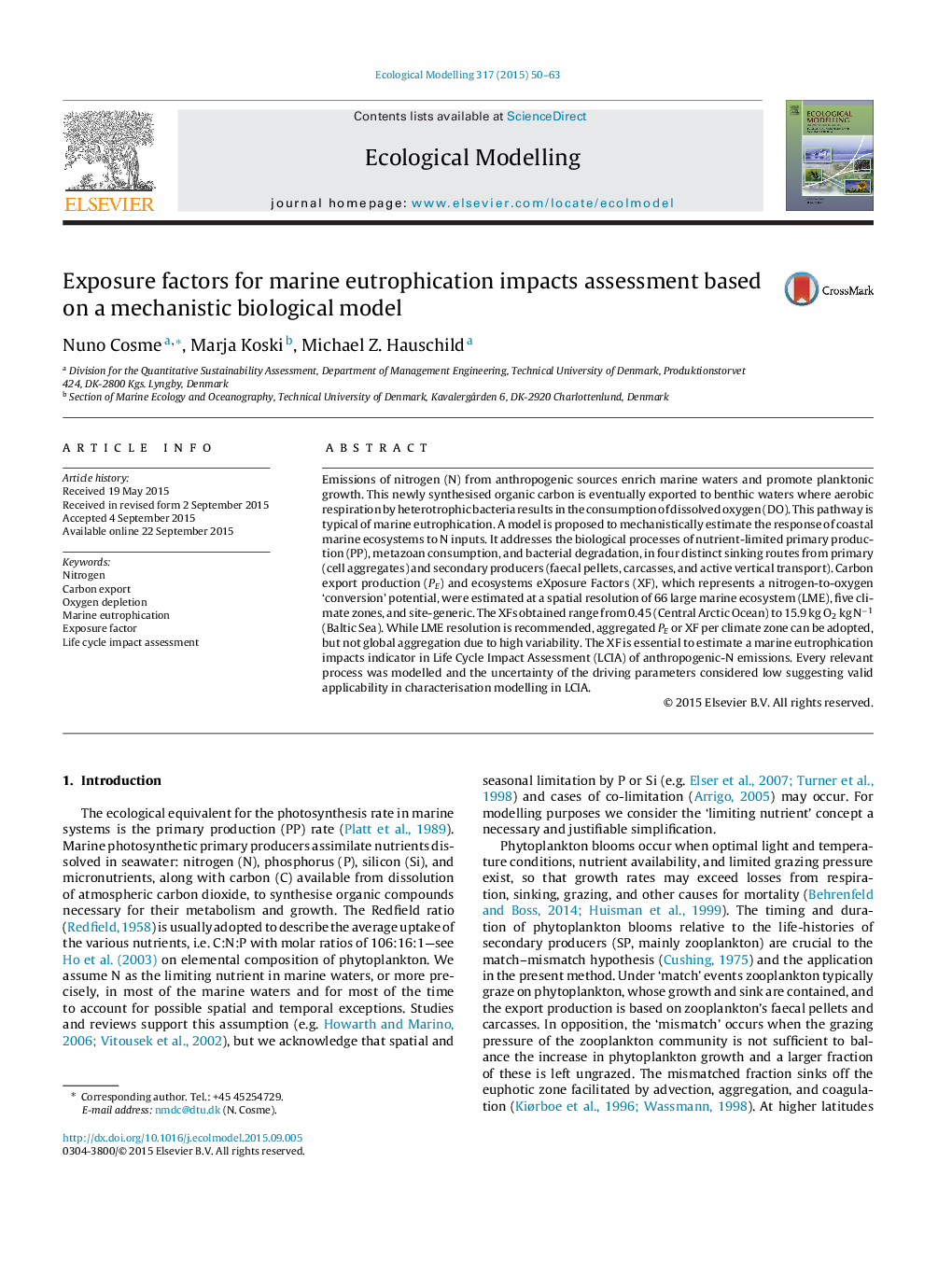| کد مقاله | کد نشریه | سال انتشار | مقاله انگلیسی | نسخه تمام متن |
|---|---|---|---|---|
| 4375662 | 1617430 | 2015 | 14 صفحه PDF | دانلود رایگان |
• A global method is presented to quantify the response of marine coastal waters to nitrogen inputs.
• The approach includes a biological model of carbon export, consumption, and respiration.
• The exposure factor (XF) expresses the conversion of assimilated N into consumed benthic oxygen.
• The XF is an indicator of the potential marine eutrophication impacts caused by anthropogenic N.
• XFs are estimated for 66 large marine ecosystems for comparative assessments of such impacts.
Emissions of nitrogen (N) from anthropogenic sources enrich marine waters and promote planktonic growth. This newly synthesised organic carbon is eventually exported to benthic waters where aerobic respiration by heterotrophic bacteria results in the consumption of dissolved oxygen (DO). This pathway is typical of marine eutrophication. A model is proposed to mechanistically estimate the response of coastal marine ecosystems to N inputs. It addresses the biological processes of nutrient-limited primary production (PP), metazoan consumption, and bacterial degradation, in four distinct sinking routes from primary (cell aggregates) and secondary producers (faecal pellets, carcasses, and active vertical transport). Carbon export production (PE) and ecosystems eXposure Factors (XF), which represents a nitrogen-to-oxygen ‘conversion’ potential, were estimated at a spatial resolution of 66 large marine ecosystem (LME), five climate zones, and site-generic. The XFs obtained range from 0.45 (Central Arctic Ocean) to 15.9 kg O2 kg N−1 (Baltic Sea). While LME resolution is recommended, aggregated PE or XF per climate zone can be adopted, but not global aggregation due to high variability. The XF is essential to estimate a marine eutrophication impacts indicator in Life Cycle Impact Assessment (LCIA) of anthropogenic-N emissions. Every relevant process was modelled and the uncertainty of the driving parameters considered low suggesting valid applicability in characterisation modelling in LCIA.
Journal: Ecological Modelling - Volume 317, 10 December 2015, Pages 50–63
